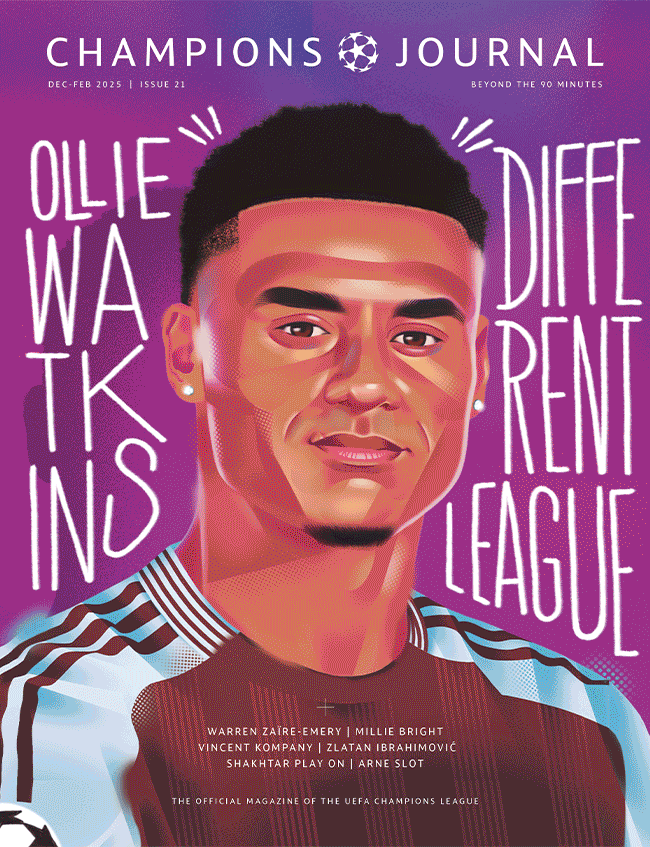Ajax, 1995 Champions League final
“This was Louis van Gaal’s cool young Ajax side that beat AC Milan in the final in Vienna, so that adds to the shirt’s lustre. But it ticks a lot of other boxes for a football shirt geek. This was the first time we saw the Champions League starball patch – how powerful is that? – and the first game in the competition when players’ names appeared on the back of their shirts. Both teams wore away shirts too, another collectors’ item.”
Real Madrid, 2002 Champions League final
“This was Real Madrid’s centenary shirt, so there is no sponsor and minimal branding, and it goes against everything you expect in terms of design aesthetic. I love the collar and simplicity, but it’s all about what happened in it: the Zidane volley, Raúl and Luís Figo, and those Galácticos dismantling teams. The shirt Real wore to win the 1998 final was more niche, but the team didn’t have the same star quality, so the 2002 version is more popular.”
Juventus, 1996 Champions League final
“Juventus won only one of three successive finals and this was the shirt Fabrizio Ravanelli wore to score their goal in that match. We bought it from the Ajax player Ravanelli swapped with, but I’m sworn to secrecy over his identity. It conjures images of that great team – and Gianluca Vialli in his last game for Juventus – lifting the trophy. The shirt was made by Kappa back when the title of Champions League-winning kit brand was up for grabs.”
Borussia Dortmund, 1997 Champions League final
“My favourite from the Champions League era. This is Karl-Heinz Riedle’s shirt from the final; he scored twice and it’s a museum piece we are very lucky to have. I watched the game thinking, ‘They didn’t wear this in the last round. Where have they pulled it from?’ It was the 1997/98 kit, with the old sponsor. UEFA regulations demanded the club fix a strip of fluorescent tape over the Dortmund text on the back of the shirt. Can you imagine that happening today?”
Manchester United, 1998/99 Champions League
“This reminds me of Champions League nights: switching on ITV and hearing Clive Tyldesley, and how big the matches seemed. United had a special shirt for European fixtures and it felt like they played up to it. This is David Beckham’s from the hammering of Brøndby at Old Trafford, which was one of my favourite games. I thought they had thrown it all away in the final… It will never be as good as that again.”






























